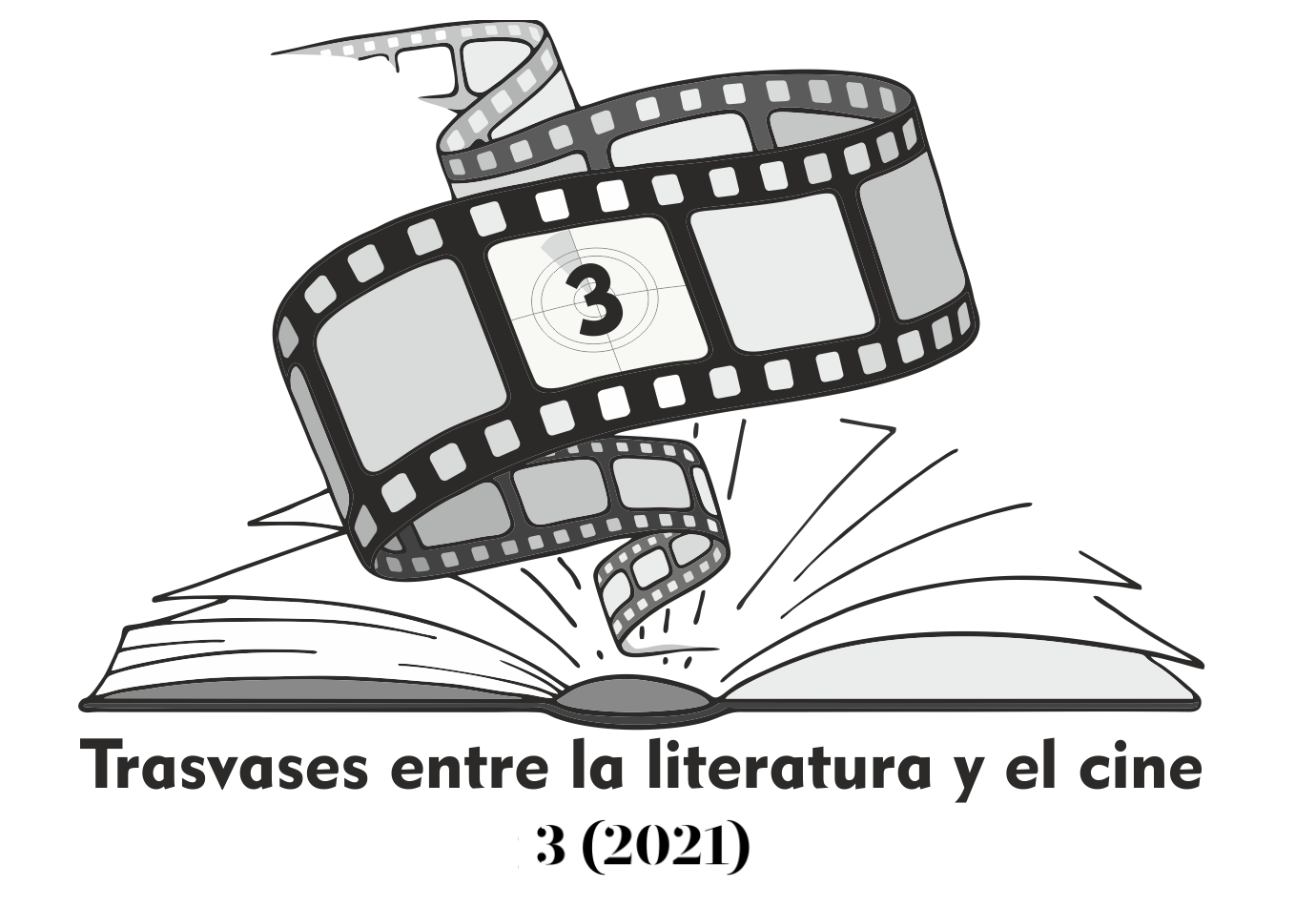Pierre Menard’s Paradox: the film Antígona from Giorgos Tzavellas and the difficulty of adapting a classical Greek tragedy
DOI:
https://doi.org/10.24310/Trasvasestlc.vi3.10683Keywords:
Antigone, Tzavellas, film adaptation, classical Greek tragedy, early musicAbstract
In this work we will address the difficulty of adapting to the cinematographic media an Attic tragedy, from the version of Sophocles’ Antígona by the filmmaker Giorgos Tzavellas in 1961; a film that exhibited its supposed fidelity to the original work by departing from the spirit and aesthetics of the so-called peplum cinema. We will also reflect on the revisitation of the classics and consider the issue of fidelity by establishing an analogy with historicist interpretations of early music.
Downloads
Metrics
Publication Facts
Reviewer profiles N/A
Author statements
Indexed in
-
—
- Academic society
- N/A
- Publisher
- Universidad de Málaga
References
ALUNNO, Marco (2005), «Reflexiones alrededor de la diégesis del sonido en el cine», en Teresa Fraile y Eduardo Viñuela (eds.), Relaciones música e imagen en los medios audiovisuales, Oviedo, Servicio de Publicaciones de la Universidad de Oviedo, págs. 15-24.
ARISTÓTELES, Poética, ed. trilingüe de Agustín García Yebra, Madrid, Gredos (2010).
BETTETINI, Gianfranco (1977), Producción significante y puesta en escena, trad. de Juan Díaz de Atauri, Barcelona, Gustavo Gili.
BORGES, Jorge Luis (1999), «Pierre Menard, autor del Quijote», en Ficciones, Madrid, Alianza, págs. 41-55.
DELEUZE, Gilles (1983), Cinéma 1. L’image-Mouvement, París, Éditions de Minuit.
ENRILE ARRATE, Juan Pedro y Alfredo FERNÁNDEZ SINDE (2009), Arquitectura de espectáculo y puesta en escena en la Antigua Grecia, Madrid, Fundamentos.
GARCÍA ROMERO, Fernando (1998), «Adaptaciones cinematográficas de la tragedia griega: puesta en escena antigua y moderna», en Elsa García Novo e Ignacio Rodríguez Alfageme (eds.), Dramaturgia y puesta en escena en el teatro griego/Drammaturgia e messa in scena nel teatro greco, Madrid, Ediciones Clásicas, págs. 193-203.
LEHMANN, Hans-Thies (2006), Postdramatic Theatre, introd. y trad. de Karen Jürs-Munby, Taylor & Francis e-Library [En línea: https://monoskop.org/images/2/2d/Lehmann_Hans-Thies_Postdramatic_Theatre.pdf. Fecha de consulta: 27/10/2020].
MAGADÁN OLIVES, María Teresa (2007), «El mundo griego en la cinematografía griega y occidental: paralelismos y divergencias», en Javier Alonso Aldama y Olga Omatos Sáenz (eds.), Cultura Neogriega. Tradición y modernidad. Actas del III Congreso de Neohelenistas de Iberoamérica, Bilbao, Universidad del País Vasco, págs. 393-406.
MITRY, Leonard B. (1989), Estética y psicología del cine. 2 Las formas, trad. de Mauro Armiño, Madrid/México, Siglo XXI.
PAVIS, Patrice (2015), La puesta en escena contemporánea. Orígenes, tendencias y perspectivas, trad. de Magaly Muguercia, Murcia, Universidad de Murcia, Servicio de Publicaciones.
REYES, Alfonso (1952), «Apolo o la literatura», en La experiencia literaria, Buenos Aires, Losada, págs. 85-105.
SÁNCHEZ NORIEGA, José Luis (2000), De la literatura al cine. Teoría y análisis de la adaptación, Barcelona/Buenos Aires/México, Paidós.
STAM, Robert (2009), Teoría y práctica de la adaptación, trad. de Florencia Talavera, México, Universidad Nacional Autónoma de México [En línea: http://guion2.weebly.com/uploads/1/5/0/9/15091428/teora_y_practica_de_la_adaptacin.pdf. Fecha de consulta: 02/11/2020].
STEINER, George (1987), Antígonas. Una poética y una filosofía de la lectura, trad. de Alberto L. Bixio, Madrid, Gedisa.
TARUSKIN, Richard (1990), «The Modern Sound of Early Music», The New York Times, 29/07/1990 [En línea: https://www.nytimes.com/1990/07/29/arts/the-spin-doctors-of-early-music.html. Fecha de consulta: 31/10/ 2020].
VALVERDE GARCÍA, Alejandro (2009), «Antígona de Yorgos Tzavelas, un instrumento didáctico para la prevención y resolución de conflictos», Estudios Neogriegos, 12, págs. 173-188.
——, «Grecia Antigua en el cine griego», Thamyris, n. s., 3, 2012, págs. 251-271 [En línea: http://www.thamyris.uma.es/Thamyris3/VALVERDE.pdf. Fecha de consulta: 01 /11/ 2020].
VERNANT, Jean-Pierre y Pierre VIDAL-NAQUET (1989), «El sujeto trágico: historicidad y transhistoricidad», en Mito y tragedia en la Grecia antigua, II, trad. de Ana Iriarte, Madrid, Taurus, págs. 83-95.
ZIMMERMANN, Bernhard (2012), Europa y la tragedia griega. De la representación ritual al teatro actual, trad. de José Antonio Padilla Villate, Madrid, Siglo XXI.
Downloads
Published
How to Cite
Issue
Section
License
All authors published in this journal accept the following copyright terms:
a. Authors retain their authors´ rights (copyright) and grant First Publication Rights to the journal, which whill be published under a the Creative Commons Attribution-NonCommercial-ShareAlike 4.0 International (CC BY-NC-SA 4.0) license. All about this license is available in the following link: <http://creativecommons.org/licenses/by-nc-sa/4.0>
b. Authors may separately establish additional agreements for the non-exclusive distribution of the version of the work published in the journal (e.g. including it in an institutional repository, or publishing it in a book) with an acknowledgement of its initial publication in this journal.
c. Authors are allowed and encouraged to disseminate their work electronically (e.g. in institutional repositories or on their own website) as this can lead to productive exchanges, as well as earlier and more extensive citation of published work.
The author is responsible for obtaining permission from the copyright holder when using copyrighted materials.
This electronic journal is published by University of Málaga (UmaEditorial), thus it is necessary to cite the origin of any partial or total reproduction.








22.png)










